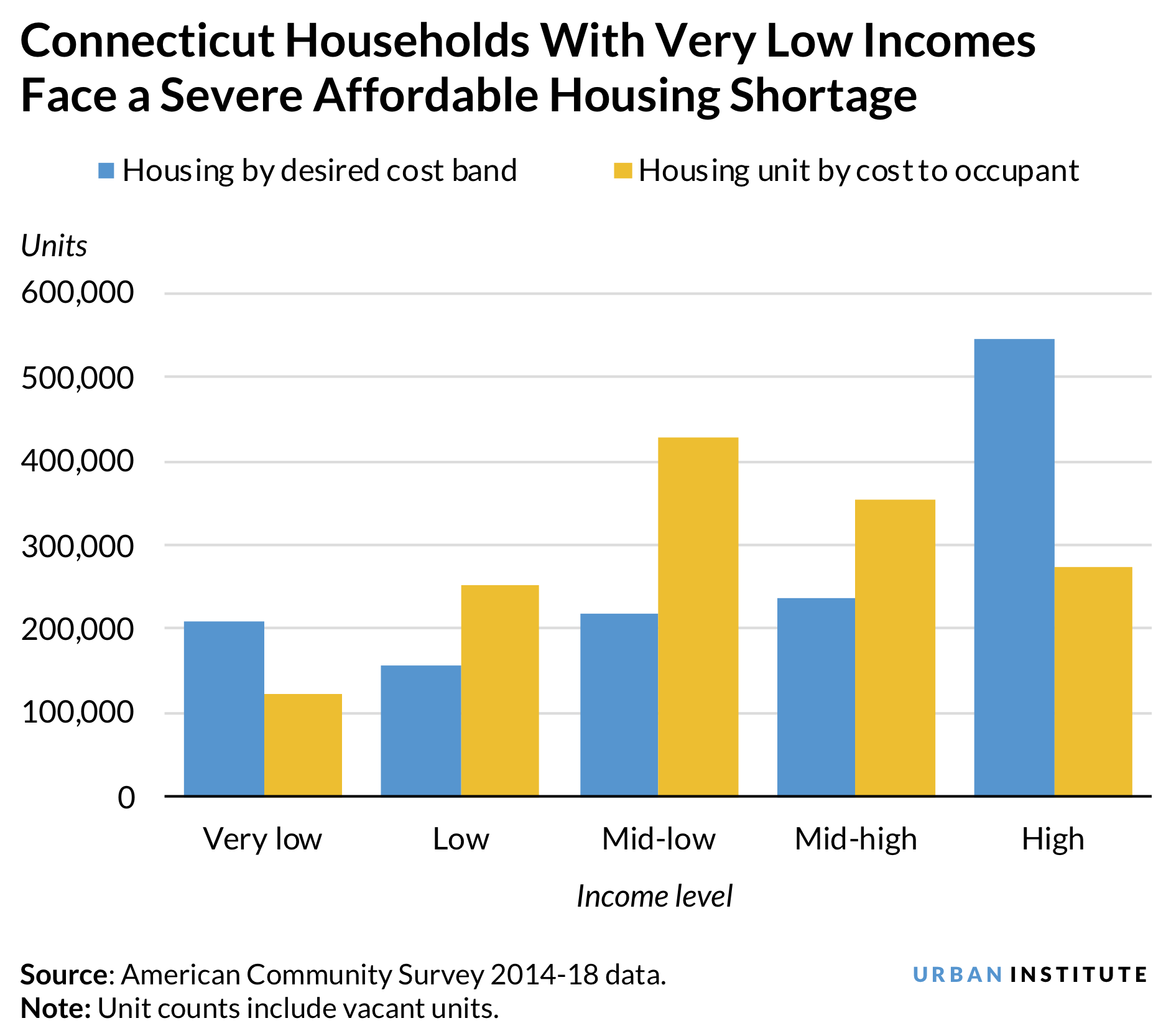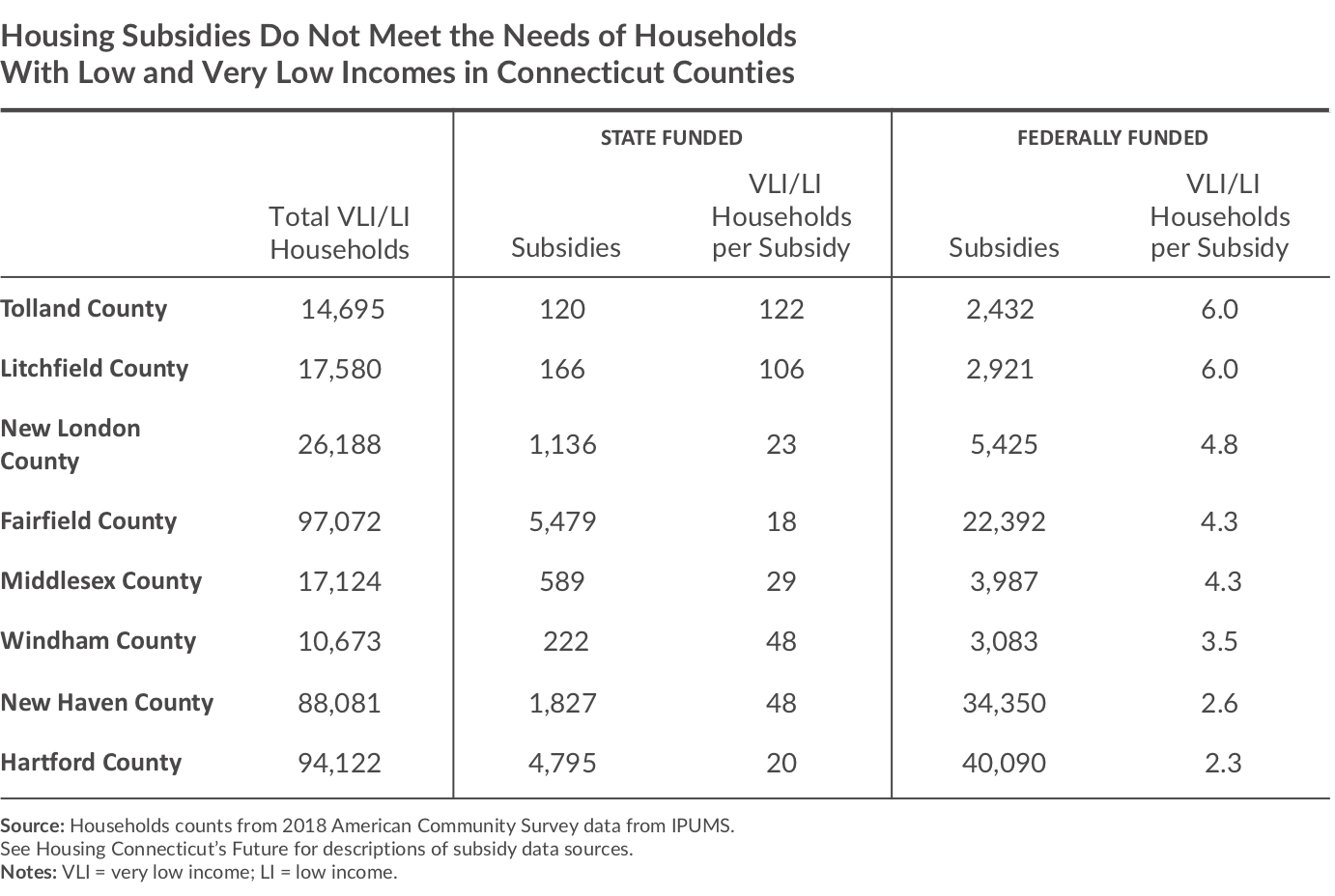
<p>DenisTangneyJr/Getty Images</p>
Even before he was elected, President Biden gave clear signals that his administration would aggressively address the housing challenges facing many Americans. Within his first week, he issued a memorandum to the US Department of Housing and Urban Development (HUD) stating that the federal government would work to end housing discrimination, promote diverse and inclusive communities, and secure equal access to housing opportunity for all.
One challenge to achieving these affordable housing goals is a recently filed complaint (PDF) against the state of Connecticut, which alleges local laws maintain and perpetuate residential segregation on the basis of race. While HUD and the US Department of Justice are reviewing this complaint, Connecticut lawmakers are debating actions that could address several of the concerns it has raised.
A new Urban Institute report created in collaboration with Fairfield County’s Center for Housing Opportunity and other leading local housing and data analytics organizations confirms Connecticut needs to expand and better direct housing resources to both the private and income-restricted markets to adequately meet the housing needs of its population. Local policymakers have several tools at their disposal that can help them create a housing system that expands opportunity for all.
Connecticut faces a large and inequitable affordable housing gap
We found that households with very low incomes (those under 30 percent of county median income) face an 86,068 unit affordable housing shortage—a gap that is present in all counties. This shortage disproportionately affects Latino and Black households in Connecticut; 27 percent of each have very low incomes, compared with 12 percent of white-headed households. And although the state’s population is expected to decrease over the next two decades, we project this will not close the housing affordability gap.

What’s more, the lack of affordable housing is also driving wide racial disparities in cost burden rates that already existed because of a history of discriminatory housing policies and land use practices.
Today, more than half of households headed by Latino and Black people in Connecticut are housing cost burdened, meaning their total housing costs (including rent, mortgage payments, taxes, and utilities) are 30 percent or more of their income, compared with less than a third of white households. More than a quarter of Latino- and Black-headed households are severely cost burdened, paying half or more of their income on housing costs.

Government-assisted housing programs are not adequately targeting areas and people with the greatest needs
The data in our report provide an opportunity to recalibrate the way the state deploys housing resources. They give state policymakers the ability to proactively meet the growing housing needs of communities of color with low incomes and to redress decades of housing policy and practice which have resulted in two racially and economically segregated types of communities—poor urban centers and wealthy white suburbs. With limited dollars and capacity in play, it is imperative for Connecticut to use data to allocate housing investments to areas with the greatest need.
Our analysis revealed that Connecticut’s most prolific housing programs are not adequately addressing its affordable housing shortfall. The federal Low-Income Housing Tax Credit program is the largest source of government support for financing affordable housing construction and preservation and currently funds slightly more than 10,000 units in the state, mostly in Fairfield County. But frontloading tax credits for private developers in exchange for units affordable at 50, 60, and 80 percent of median income does not, by itself, reach residents with the lowest incomes.
Federal housing choice vouchers and Section 8 project-based rental assistance offer the greatest assistance to households with low incomes across Connecticut (43,000 and 26,000 households, respectively), and public housing provides an additional 14,000 units (split primarily between New Haven and Fairfield Counties). Though the state-funded Moderate Rental Housing Program (about 5,400 units) and deed-restricted housing (4,900 units) make notable contributions, they don’t provide enough units or vouchers to ensure the state’s low-income population can access safe and affordable housing.
Furthermore, neither state nor federally funded assisted housing programs meet needs across the state or provide housing opportunities equitably. Hartford and New Haven counties, which are home to large Black and Latino communities, receive a disproportionately large share of subsidies relative to their population of households with very low and low incomes, while Litchfield and Tolland Counties, which are predominantly white, receive disproportionately few. This limits housing opportunities in parts of the state, reinforcing residential segregation.

Going forward, we project Connecticut’s white population will age and shrink, while Latino, Black, and Asian populations will grow. This increases the urgency to pursue a data-driven strategy to target resources more equitably.
Connecticut needs both programmatic and systemic solutions to address housing challenges
Like other states, Connecticut cannot rely on status quo policy and the private market to balance housing supply and demand. Local zoning jurisdiction and land use regulations dictate private market development and exclude the voices of renters with moderate to low incomes and communities of color who are often not represented on zoning commissions where land use decisions are made. People of color and people with disabilities face unfair or illegal barriers to accessing housing opportunities (PDF). These residents must rely on the state to ensure their housing needs are met—that all residents can fairly access a safe and affordable home in the community of their choice.
There is no single policy solution to the state’s complex and dynamic housing challenges. Instead, the data point to an “and and both” approach. Investment in housing in urban centers and in suburbs. The production of new units and the preservation of existing housing. Low Income Housing Tax Credits and housing vouchers. Land use reform and developer incentives. Fair housing education and enforcement.
This is an all-hands-on deck moment in Connecticut. Unwinding decades of housing policies that have left the system unable to balance supply and demand will require harnessing every available resource in the coming months and years
Let’s build a future where everyone, everywhere has the opportunity and power to thrive
Urban is more determined than ever to partner with changemakers to unlock opportunities that give people across the country a fair shot at reaching their fullest potential. Invest in Urban to power this type of work.